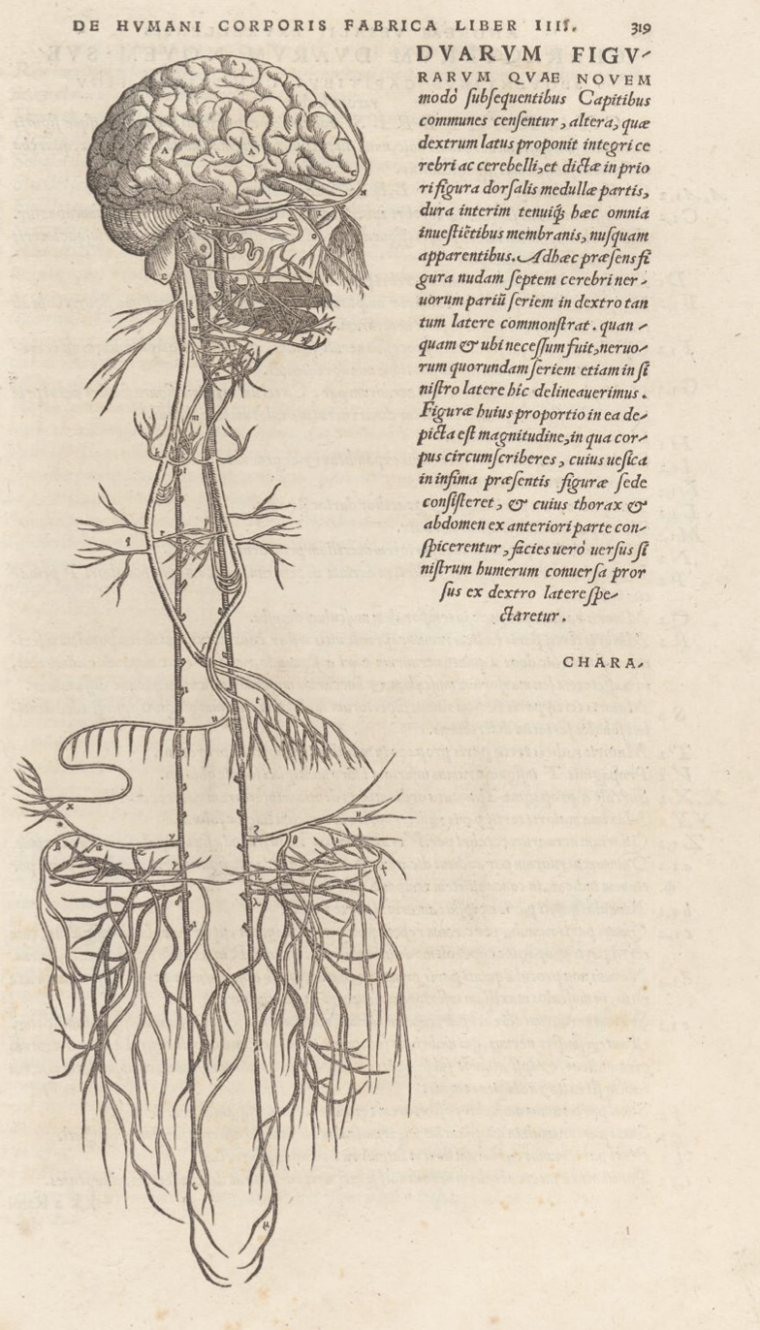Imagining Vesalius
In 1543, a 29-year-old Flemish anatomist named Andreas Vesalius upended the medical world by publishing the first ever anatomy atlas based on actual direct observation and dissection of the human body. His seven volume atlas, De Humani Corporis Fabrica (The Fabric of the Human Body) remains a classic, and Vesalius is considered the founder of modern anatomy.
Richard Ratzan’s wonderful new anthology, Imagining Vesalius, is a collection of poems. essays, and art inspired by Vesalius’ detailed (and occasionally flawed) woodcuts of the human body. I had the pleasure of writing about “The Nerve Center,” but the book is open-source, so you can page through the entire thing. It’s a real treasure!

The Nerve Center
by Danielle Ofri
“Oh, Oh, Oh, To Touch and Feel a Guy’s Vas deferens Sometimes Helps.”
This was the mnemonic we used in anatomy class to memorize the twelve cranial nerves (and to counter the more prevalent version that referred to a woman’s genitalia). This was also the first thing that popped into my mind when I gazed at Vesalius’s rendering of the nervous system. It starts with the brain and cranial nerves on top and reaches downward, pretty much to the vas deferens.
Seeing the nervous system entirely disembodied is revelatory. While we typically envision the brain as a palpable whole, the spidery latticework of nerves is a more ephemeral affair. At best the nerves come across as limp linguini, flopping languidly over whatever bone, muscle or organ offers a convenient landing pad.
Vesalius’s version offers heft and independence to these humble nerves. The nerves stand on their own two feet, as it were, rightly illuminating their commanding role of the body.
What I love about this particular view is that it dispenses with the thorax and the limbs. Vesalius has other drawings depicting the nerve supply to these parts but for this particular figure I imagine him shrugging off the thorax as mere scaffolding, and the arms as mere mechanical tools. The real meat of the human enterprise—Vesalius might be saying—is the face, the gut and the groin. This is where the action is, and it is the nerves that corral these three regions into intimate acquaintance and action.
The face—our interpreter and communicator for the outside world—is a hotbed of nerves. Like a great Oz, the brain sits right behind the face jiggering and rejiggering facial expressions. It soaks up the sights, sounds, and tastes, and oh oh oh those smells. (The aquiline nose depicted by Vesalius is particularly enriched with nerves.)
As Vesalius shows us, these senses, emotions, and expressions are knitted inextricably with the machinations of the abdomen and pelvis. Direct neural highways run north and south, ensuring that our gut feelings do indeed hurtle from our gut to our brain, that butterflies invade our stomachs when we feel skittish and that nerve-wracking situations send us scrambling to the bathroom.
Vesalius’s drawing affirms the primacy and vigor of the nervous system. Even with the numerous inaccuracies modern anatomists have pointed out, it’s clear that Vesalius got the basic construct correct. Thoughts, emotions, and feelings may swirl in our heads, but they dwell in the pit of our stomach. Sensory input may be processed north of our neck, but the reactions erupt from our gut. Without such connections between the emotional and the physical (and the resultant fountain of literary metaphor thus available) our lives would be dull mechanistic transactions. And legions of poets would likely end up employed as accountants.
Browse the rest of Imagining Vesalius.
